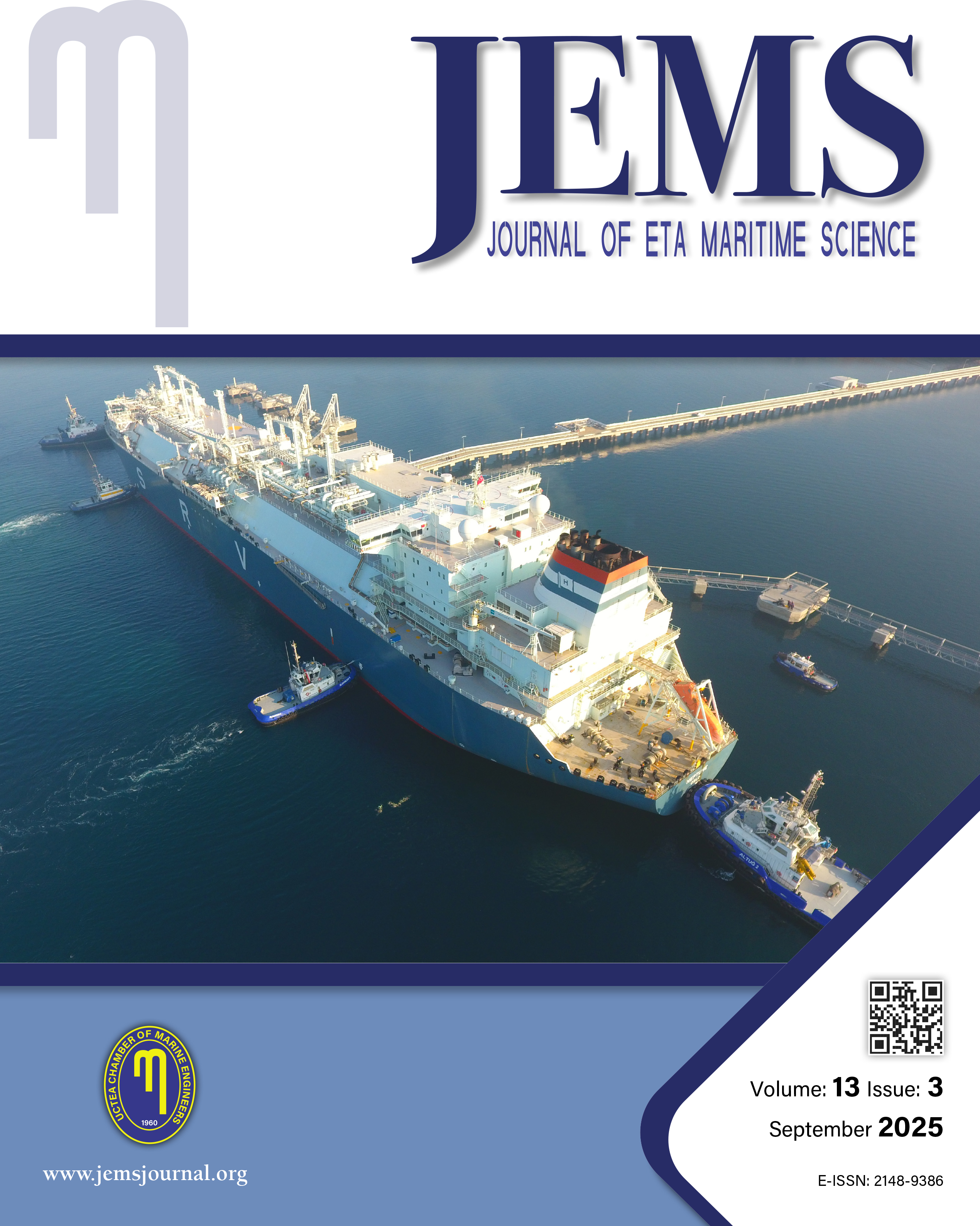

JEMS apply the Creative Commons Attribution NonCommercial 4.0 International Licence to all manuscripts to be published
Waste Heat Recovery-based Seawater Desalination for Sustainable Maritime Operations: A Study on Heat Transfer, Techno-economic Feasibility, and Environmental Impact
Shajratul Alam Towhid1, Mohammad Rafiqul Islam2, Mohammad Khalikujjaman1, Bhubon Thiotonius Costa11Bangladesh University of Engineering and Technology, Department of Naval Architecture and Marine Engineering, Dhaka, Bangladesh2Islamic University of Technology, Honorable Vice Chancellor, Gazipur, Bangladesh
Maritime vessels produce a large amount of waste heat, with approximately 51% of fuel energy dissipated during operation, and exhaust heat comprising the largest portion, approximately 26% of the dissipated heat. This represents a huge potential energy source, which could be utilized to address the crucial challenge of continuous freshwater supply onboard ships, especially for long voyages. Conventional onboard desalination systems like Reverse Osmosis (RO), Distillation (Multi-Stage Flash and Multi-Effect Distillation) or Electrodialysis are energy-intensive, space-intensive, and environmentally harmful due to high brine discharge. Additionally, the need for real-world experiments is crucial to understand the actual desalination feasibility onboard ships. This study meets those gaps by presenting a simple novel desalination system that directly utilizes the exhaust heat from the ship engine, featuring two unique components and processes: a prototype floating-head shell-and-tube heat exchanger for evaporation, and the ships natural motion-driven seawater circulation for condensation. The experimental investigation was conducted using the exhaust of a 1 MW Caterpillar engine to represent the actual marine-type engine. Experimental testing demonstrates a maximum freshwater production of 1.1815 tons/day, a 97% reduction in brine discharge, a CO2 emission reduction of approximately 0.0886 tons/year per ship, and an increase in cargo capacity of about 396 tons/year per ship compared to RO-based systems. Along with considering practical challenges of thermodynamic analysis, the results highlight a sustainable waste-heat-driven desalination system in maritime applications that economically and environmentally reduces extra fuel and RO replacement costs, and a potential alternative to energy-intensive desalination technologies.
Keywords: Waste heat recovery, heat exchanger, desalination, heat transfer effectiveness, sustainable maritime technologyManuscript Language: English
(692 downloaded)










